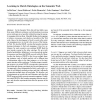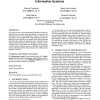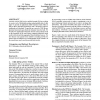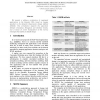ICSE
2004
IEEE-ACM
14 years 11 months ago
2004
IEEE-ACM
Semantic Web, the next generation of Web, gives data well-defined and machine-understandable meaning so that they can be processed by remote intelligent agents cooperatively. Onto...
SIGMOD
2002
ACM
14 years 11 months ago
2002
ACM
Semantic Web Enabled Web Services (SWWS) will transform the web from a static collection of information into a distributed device of computation on the basis of Semantic Web techn...
VLDB
2003
ACM
14 years 11 months ago
2003
ACM
On the Semantic Web, data will inevitably come from many different ontologies, and information processing across ontologies is not possible without knowing the semantic mappings be...
WWW
2002
ACM
15 years 6 days ago
2002
ACM
Ontologies play a prominent role on the Semantic Web. They make possible the widespread publication of machine understandable data, opening myriad opportunities for automated info...
WWW
2003
ACM
15 years 6 days ago
2003
ACM
WWW
2003
ACM
15 years 6 days ago
2003
ACM
Despite numerous proposals for its creation, the semantic web has yet to achieve widespread adoption. Recently, some researchers have argued that participation in the semantic web...
WWW
2003
ACM
15 years 6 days ago
2003
ACM
This paper presents a design methodology that deals with the presentation aspects involved in the development of a Semantic Web Information System. The methodology is driven by tw...
WWW
2003
ACM
15 years 6 days ago
2003
ACM
The success of the Semantic Web crucially depends on the easy creation, integration and use of semantic data. For this purpose, we consider an integration scenario that defies cor...
WWW
2003
ACM
15 years 6 days ago
2003
ACM
Activities such as Web Services and the Semantic Web are working to create a web of distributed machine understandable data. In this paper we present an application called Semanti...
WWW
2004
ACM
15 years 6 days ago
2004
ACM
We present a software architecture to implement applications in the Semantic Web, based on designs specified in the Semantic Hypermedia Design Method (SHDM). This architecture sup...





